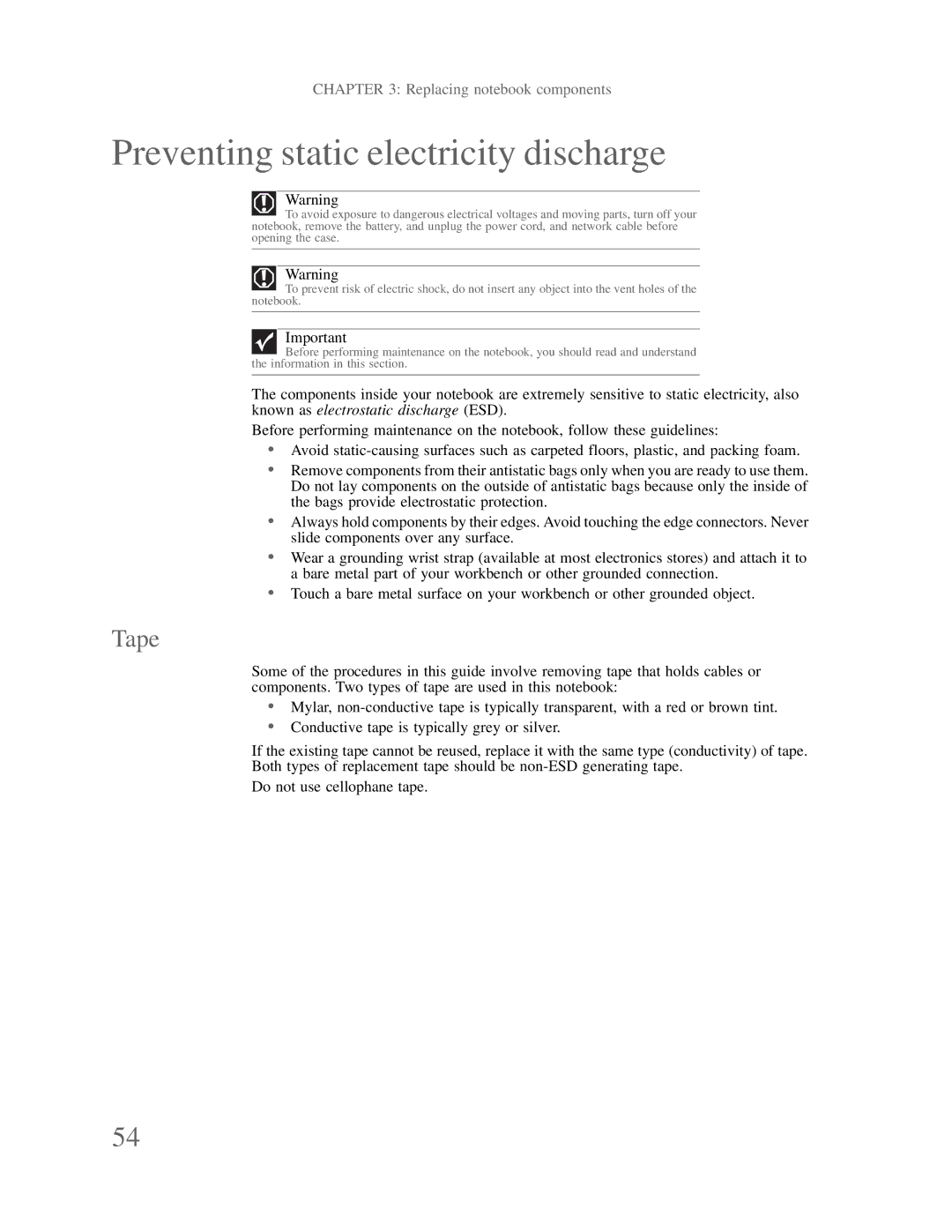
CHAPTER 3: Replacing notebook components
Preventing static electricity discharge
Warning
To avoid exposure to dangerous electrical voltages and moving parts, turn off your notebook, remove the battery, and unplug the power cord, and network cable before opening the case.
Warning
To prevent risk of electric shock, do not insert any object into the vent holes of the notebook.
Important
Before performing maintenance on the notebook, you should read and understand the information in this section.
The components inside your notebook are extremely sensitive to static electricity, also known as electrostatic discharge (ESD).
Before performing maintenance on the notebook, follow these guidelines:
•Avoid
•Remove components from their antistatic bags only when you are ready to use them. Do not lay components on the outside of antistatic bags because only the inside of the bags provide electrostatic protection.
•Always hold components by their edges. Avoid touching the edge connectors. Never slide components over any surface.
•Wear a grounding wrist strap (available at most electronics stores) and attach it to a bare metal part of your workbench or other grounded connection.
•Touch a bare metal surface on your workbench or other grounded object.
Tape
Some of the procedures in this guide involve removing tape that holds cables or components. Two types of tape are used in this notebook:
•Mylar,
•Conductive tape is typically grey or silver.
If the existing tape cannot be reused, replace it with the same type (conductivity) of tape. Both types of replacement tape should be
Do not use cellophane tape.
54
